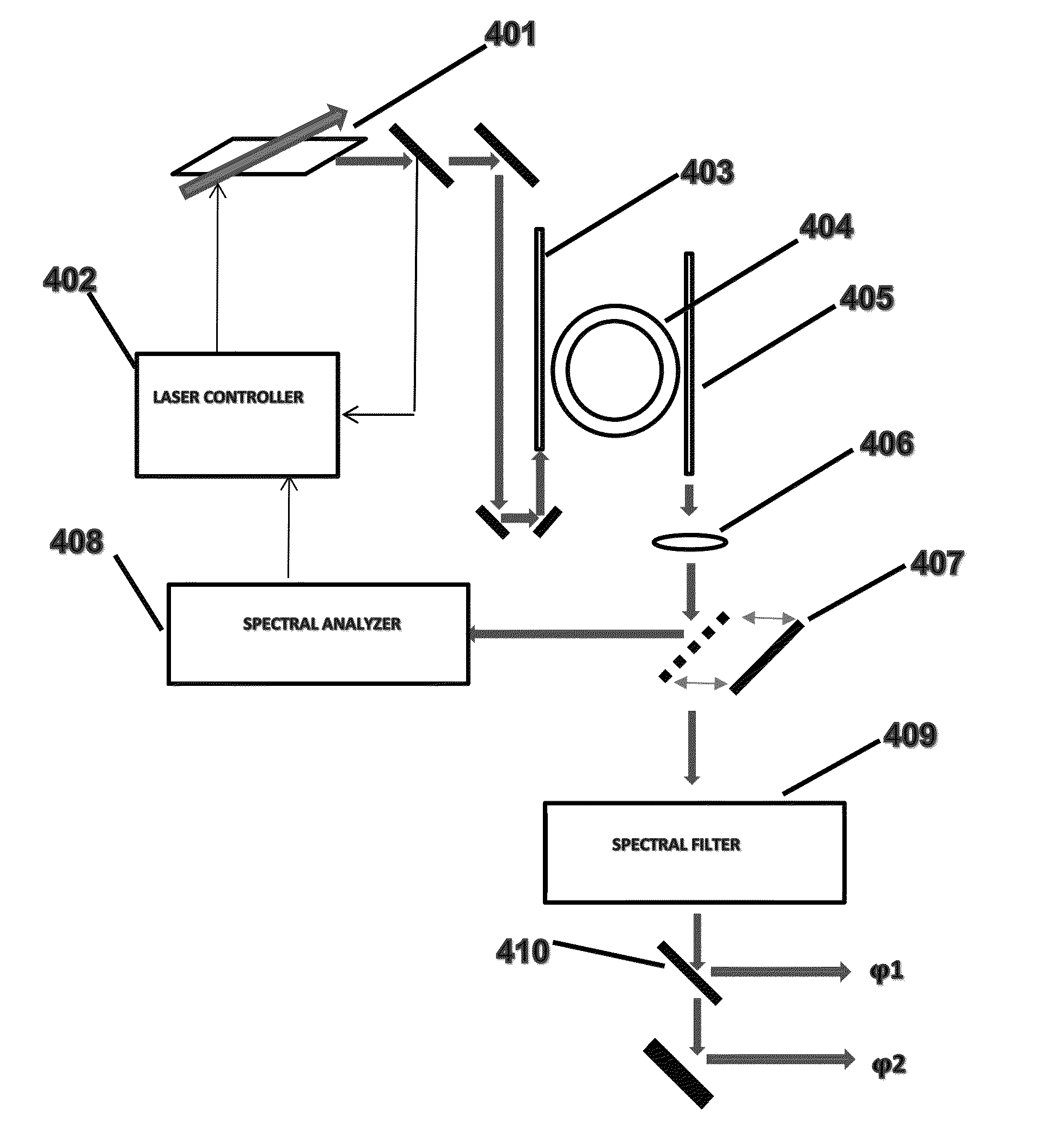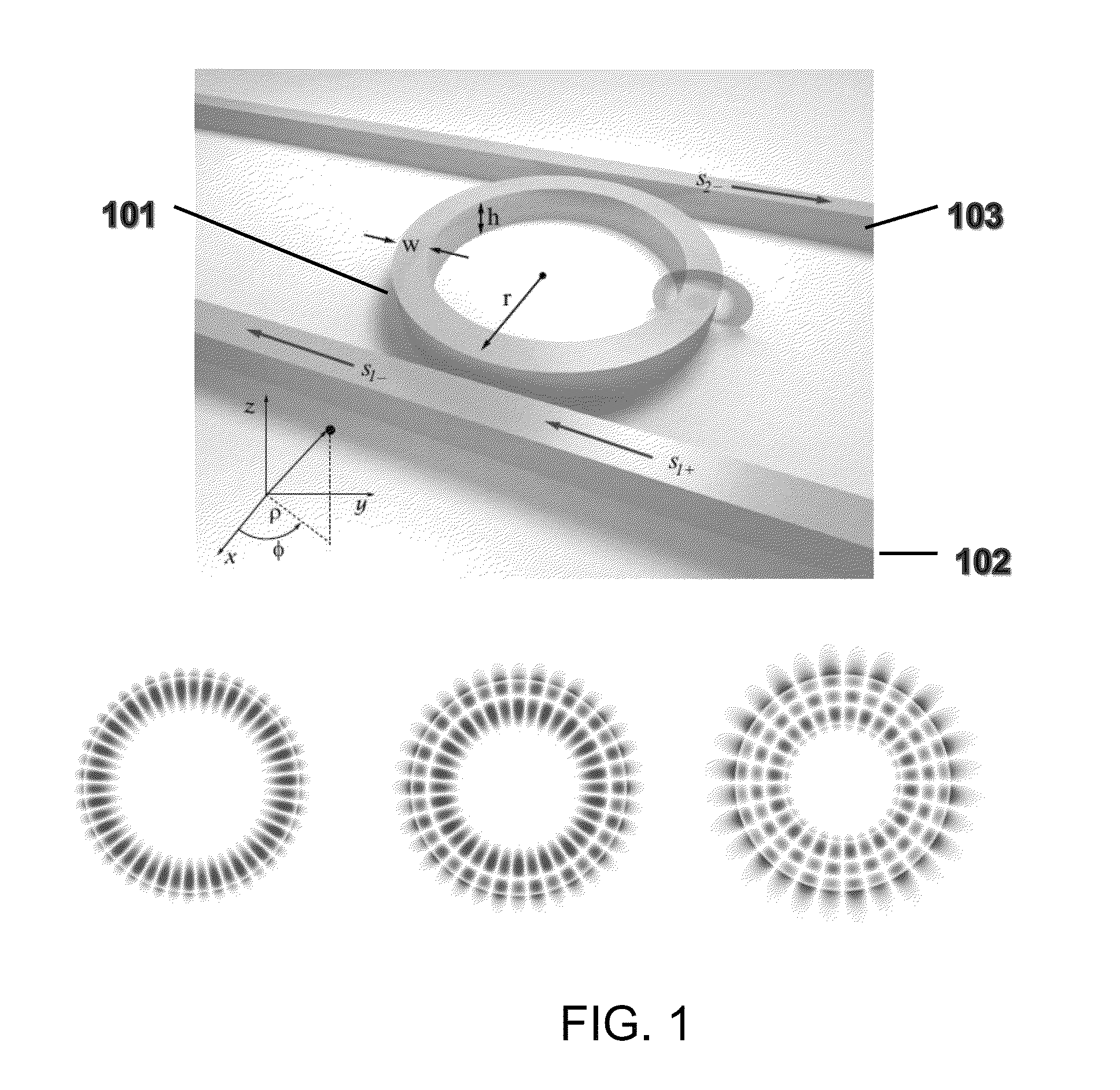Methods and apparatus of entangled photon generation using four-wave mixing
a technology of entangled photons and four-wave mixing, applied in the direction of optics, instruments, optical elements, etc., can solve the problems of linear momentum zero, linear wavevector and group velocities are poorly defined, linear wavevector and group velocities cannot be modeled with linear wavevectors,
- Summary
- Abstract
- Description
- Claims
- Application Information
AI Technical Summary
Benefits of technology
Problems solved by technology
Method used
Image
Examples
example 1
[0059]This example is provided, in part, as a pedagogical aide to introduce the interpretation of our computational results, and it is provided, in part, as a basis for comparison to the surprising results described below in Example 2.
[0060]We modeled a silicon nitride disk, suspended in air, with a radius of 20 μm and a thickness of 250 nm. Silicon nitride was of interest because it is an important optical material whose spectral bandgap lies above the energy required for two-photon absorption at the 1550 nm communication wavelength.
[0061]FIG. 2a provides a plot of the frequency 2πωm of the fundamental TE-like mode of the disk as a function of the angular wavenumber m. This mode has odd vector symmetry about the z-axis. Physically, m represents the number of wavelengths that fit around the disk for a given mode. Small values of m correspond to low frequency and long wavelength; in that regime the mode field tends to spill out into the surrounding air. At larger values of m, however...
example 2
[0071]We modeled a silicon nitride ring of radius r=20 μm, clad with silicon dioxide, and of width w=1.1 μm and thickness h=750 nm.
[0072]FIG. 3 provides a set of plots analogous to those of FIG. 2, but with certain important qualitative differences readily apparent.
[0073]FIG. 3a provides a plot of the frequency 2πωm of the fundamental TE-like mode of the ring as a function of the angular wavenumber m. As seen in the figure, the mode frequency is again bounded by two light lines, which in this case correspond to the silicon dioxide medium and the silicon nitride medium. The mode frequency is seen to transition from one light line to the other as m increases.
[0074]FIG. 3b provides a plot of the first derivative (left-hand scale) and second derivative (right-hand scale) of 2πωm(m). Unlike the case of the thin disk as seen in FIG. 2b, the FSR as seen here does not decrease monotonically, but instead undergoes a steep decrease, followed by a shallow increase. Correspondingly, the graph o...
PUM
 Login to View More
Login to View More Abstract
Description
Claims
Application Information
 Login to View More
Login to View More - R&D
- Intellectual Property
- Life Sciences
- Materials
- Tech Scout
- Unparalleled Data Quality
- Higher Quality Content
- 60% Fewer Hallucinations
Browse by: Latest US Patents, China's latest patents, Technical Efficacy Thesaurus, Application Domain, Technology Topic, Popular Technical Reports.
© 2025 PatSnap. All rights reserved.Legal|Privacy policy|Modern Slavery Act Transparency Statement|Sitemap|About US| Contact US: help@patsnap.com



